When we think of apologies, we think of the phrase “I’m Sorry.”
And that’s definitely a big piece, but it’s not the only piece.
So, what is an apology?
The definition of Apology is a “regretful acknowledgment of an offense or failure. (Noun) When you apologize, it is the action of expressing regret for something done or said.” That seems pretty straightforward and easy to do – or is it?
Many times, apologizing can seem hard. Maybe you aren’t sure what to say. Or maybe you aren’t sure why you need to apologize, only that the other person is upset somehow. Or you’ve said you are sorry, but it doesn’t seem to have been enough and you are left confused (or sometimes even irritated) about why the other person is still upset.
It turns out that there are different ingredients to an apology, and if you don’t mix the right combination for the person you are apologizing to, you are almost wasting your breath.
You might have heard of Gary Chapman’s The Five Love Languages® (if you haven’t and you are curious, I have info on my Resources Page). The Love Languages distinguish what different people value as the way(s) the express love and feel loved.
It turns out Gary Chapman, along with Jennifer Thomas, also identified The 5 Apology Languages®:
- Expressing Regret – “I’m sorry”
- Accepting Responsibility – “I was wrong”
- Making Restitution – “How can I make it right?”
- Planned Change – “I’ll take steps to prevent it happening again.”
- Requesting Forgiveness – “Can you find it in your heart to forgive me?”
Similar to the Love Languages, different people value each of the Apology Languages in a different level of importance.
Imagine if you value Regret, Responsibility, and Restitution but Forgiveness doesn’t matter to you. If you are apologizing to someone who values Forgiveness, it won’t matter that you say “I’m so sorry, this is all my fault. I’ll make it up to you.” If you don’t ask for their forgiveness, the apology isn’t complete.
You might be wondering, “but how do I know what the other person needs for the apology to work?”
The first way would be to learn each other’s Apology Languages. You can each take the quiz to learn your own, and then share with each other. The quiz can be found in the back of the book, or there is an online version. (See my Resources Page for more information). This will work well if it is a loved one who is interested in growing with you.
If you want to cover all the bases, then you can learn to deliver an artfully crafted apology that covers all the languages. This may take a little work, and some practice, to tailor it to each unique situation. The more specific your apology, the more likely it will be well received.
For example, compare the following examples:
I’m so sorry! I made a mistake! How can I make it up to you? Now that I know better, I will try to never do this again. Please forgive me.
Vs.
I’m so sorry I hurt your feelings! Now that I know sarcasm is hurtful instead of funny to you, I will do my best to avoid it with you in the future. I never want to hurt you. How can I make it up to you? I hope you can forgive me!
This first one is pretty good, and in some situations it might work fine. The second one illustrates that you recognize what, specifically, caused the hurt feelings and states that you will take the action to avoid that in the future.
This apology recipe is largely focused on personal relationships, but many of the ingredients may be needed in business situations as well – after all, the person receiving the apology still has apology languages that are important to them. This goes hand-in-hand with owning mistakes (mentioned in a previous blog). A reminder that clients can be internal or external, and whomever needs to apologize should know how to do so in a way that reflects well on the company. Some interactions where an apology might show up in business include:
- Teammate to Teammate
- Department to Department
- Customer Service to Client
- Sales to Client
- Technician to Client
- Business to Client
When it comes to the art of the apology, learn the ingredients (The 5 Apology Languages), and learn how to craft them into sincere and effective apologies as needed.
- Learn your own.
- Learn those of friends and loved ones (perhaps even co-workers) as you can.
- Observe those of the people around you.
- Practice creating impactful and meaningful apologies (you might even try writing them down first).
A well-crafted apology is an act of caring, and it fosters closer relationships and trust.

